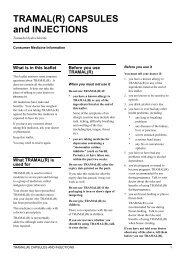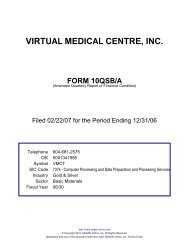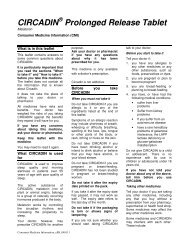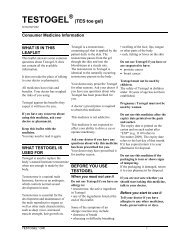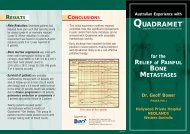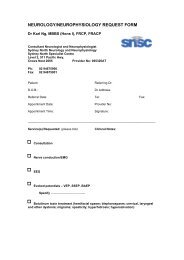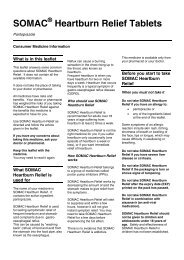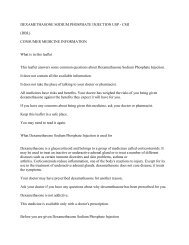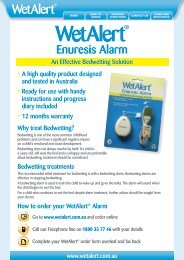VIRTUAL MEDICAL CENTRE INC
virtual medical centre, inc. form 10-k
virtual medical centre, inc. form 10-k
You also want an ePaper? Increase the reach of your titles
YUMPU automatically turns print PDFs into web optimized ePapers that Google loves.
<strong>VIRTUAL</strong> <strong>MEDICAL</strong> <strong>CENTRE</strong>, <strong>INC</strong>.<br />
Notes to Consolidated Financial Statements<br />
June 30, 2010 and 2009<br />
NOTE 1 – SUMMARY OF SIGNIFICANT ACCOUNTING POLICIES (CONTINUED)<br />
Concentration of Credit Risk<br />
Financial instruments, which potentially subject the Company to significant concentrations of credit risk, consist principally of cash, accounts<br />
receivable, and research and development receivables.<br />
Cash and cash equivalents are deposited in various financial institutions, which may be in excess of insurance limits.<br />
Accounts receivables are due from a limited group of customers. At June 30, 2010, one individual customer represented 100% of the<br />
outstanding balance.<br />
Advertising and Marketing Costs<br />
The Company expenses advertising and marketing costs in the period incurred. Advertising and marketing expenses of $419,360 and $250,729<br />
were incurred for the years ended June 30, 2010 and 2009, respectively.<br />
Employee benefits<br />
a) Defined contribution plans<br />
A defined contribution plan is a post-employment benefit plan under which an entity pays fixed contributions into a separate entity and will have<br />
no legal or constructive obligation to pay further amounts. Obligations for contributions to defined contribution plans are recognized as a<br />
personnel expense in profit or loss when they are due. Prepaid contributions are recognized as an asset to the extent that a cash refund or a<br />
reduction in future payments is available. The Company incurred $80,405 and $60,077 of expense under its defined contribution plans for the<br />
years ended June 30, 2010 and 2009, respectively.<br />
b) Long-term employee benefits<br />
The Company’s net obligation in respect of long-term employee benefits is the amount of future benefit that employees have earned in return for<br />
their service in the current and prior periods plus related on-costs; that benefit is discounted to determine its present value, and the fair value of<br />
any related assets is deducted. The discount rate is the yield at the reporting date on Commonwealth Government bonds that have maturity dates<br />
approximating the terms of the Company’s obligations.<br />
c) Short-term employee benefits<br />
Short-term employee benefit obligations are measured on an undiscounted basis and are expensed as the related service is provided. A liability is<br />
recognized for the amount expected to be paid under short-term cash bonus or profit-sharing plans if the Company has a present legal or<br />
constructive obligation to pay this amount as a result of past service provided by the employee and the obligation can be estimated reliably.<br />
Valuation of Long-Lived Assets<br />
Long-lived tangible assets and definite-lived intangible assets are reviewed for possible impairment whenever events or changes in<br />
circumstances indicate that the carrying amount of such assets may not be recoverable. The Company uses an estimate of undiscounted future<br />
net cash flows of the assets over the remaining useful lives in determining whether the carrying value of the assets is recoverable. If the carrying<br />
values of the assets exceed the expected future cash flows of the assets, the Company recognizes an impairment loss equal to the difference<br />
between the carrying values of the assets and their estimated fair values. Impairment of long-lived assets is assessed at the lowest levels for<br />
which there are identifiable cash flows that are independent from other groups of assets. The evaluation of long-lived assets requires the<br />
Company to use estimates of future cash flows. However, actual cash flows may differ from the estimated future cash flows used in these<br />
impairment tests. As of June 30, 2010, management does not believe any of the Company’s assets were impaired.<br />
32



